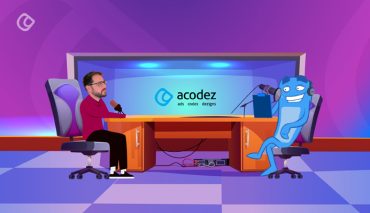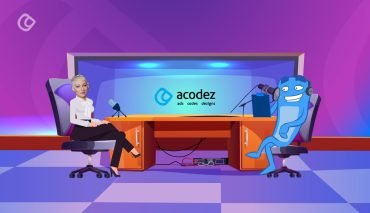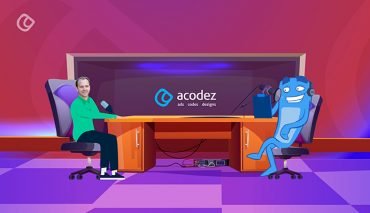It’s our pleasure that Ms Roxana Stingu has joined us for this interview. Given her established position in the marketing industry, we can’t simply get into the interview without introducing her.
Roxana Stingu is the Head of Search and SEO at Alamy. She’s been active in marketing since 2006, earning expertise in technical SEO. Her field in marketing started at the pace of her college days, where she discovered her enthusiasm for surfing and engaging in the internet, which landed her first job as a Link builder at Text Link Brokers.
Within years, she had also worked as a Jr. SEO Specialist for Webfusion LTD, strengthening her confidence to stay and continuously learn about SEO, incredibly technical SEO. Her professionalism in technical SEO includes enterprise SEO, image search, and ecommerce site search.
Now, working at Alamy, she’s discovered her interest in SEO and further about modern SEO, particularly image and video SEO. Simply said, she enjoys finding and fixing technical SEO issues and modelling theories for them.
She’s also worked for brands like GoDaddy and has been a speaker for BrightonSEO, WTSFest, and w, where she shared her ideas on page speed and image search.
Let’s start the interview
➢ As Head of SEO at Alamy, how do you optimize for image search? Image SEO seems unique compared to traditional SEO—what strategies do you use to boost visibility for visual content?
At Alamy, our core products are images and videos, so optimising for image search goes beyond the typical SEO elements such as compression and ALT text. Since we target Image Search as a distinct facet of search engines, rather than solely focusing on Web Search, we must understand the nuances in how these platforms rank visual content. This requires us to adapt our strategies accordingly, ensuring we address factors that are unique to image search algorithms and user behaviour.
➢ How do you approach balancing high-quality images with SEO needs? Does Alamy focus on metadata, alt text, or other factors to make its vast image collection more discoverable?
Image quality is indeed a crucial factor in Image Search rankings and we prioritise using large, high-resolution images to better showcase the details that matter to our users. However, larger images add significant weight to our pages, so it’s a delicate balancing act. When images need to be ‘heavy,’ we focus on lightening everything else. To achieve this, we optimise every stage of the request journey, from the network transfer to our platform’s response times, and ultimately, the browser’s rendering process. This is where a continuously optimised platform, effective caching strategies, and skilled web development truly make a difference in maintaining performance without compromising image quality.
➢ What role does user-generated content (UGC) play in your SEO strategy? With contributors uploading content to Alamy, how do you ensure that this aligns with SEO best practices?
Our content team, which manages contributors and the media uploaded to Alamy, follows a rigorous quality assurance process to ensure that only content meeting our high standards is accepted. To complement this, we provide extensive support to contributors to help them optimise the metadata associated with their images, such as captions and tags. This ensures that the content not only meets our quality expectations but is also aligned with SEO best practices. By guiding contributors on effective tagging and metadata input, we can enhance the discoverability of their content while maintaining a strong SEO strategy across the platform.
➢ What are the key factors you consider when conducting a technical SEO audit?
When conducting a technical SEO audit, I approach it from the perspective of a search engine bot. My first step is to assess the discoverability of the website, including sitemaps, internal linking, orphan pages, and the backlink profile, ensuring that all relevant content can be found by search engines. From there, I evaluate crawlability, checking if the robots.txt file permits crawling of important content, if the server response times are reasonable, and whether the content download size is optimised to allow efficient crawling. I also look for crawl wastage, identifying areas of the website being crawled without providing value. This is where log files, or even Google Search Console, prove useful.
However, not all content that can be crawled will necessarily be indexed. To assess indexability, I examine meta tags that might block indexing, the quality of the pages, and whether they meet user intent, determining which pages should or should not be indexed. I then focus on ranking factors, reviewing schema markup for rich snippets and analysing user behaviour data such as short sessions or high bounce rates that might indicate poor engagement with the content. I also investigate who else is ranking and which features they use.
Next, I analyse traffic sources to understand what drives the most visitors and identify potential missed opportunities. Finally, I examine conversion data to determine which traffic sources convert best.
This comprehensive process allows me to prioritise issues based on their potential impact on traffic growth, starting with the fixes that will drive the most valuable, converting traffic. Because of this approach, no two websites result in the same action plan, ensuring a tailored strategy that aligns with the site’s niche, user base, and business objectives.
➢ Could you share some insights on optimizing websites for international audiences and multilingual SEO?
Optimising an image-heavy site for international audiences follows similar principles to any other website. However, when it comes to images specifically, it’s important to note that image URLs don’t necessarily need to be localised or translated. You can use a single image file URL across pages in different languages, which is beneficial for saving crawl budget. That said, if you’ve already translated image URLs, it’s often best to leave them as they are. Renaming image URLs, even with redirects in place, tends to take longer for search engines to process compared to changes in HTML URLs, which could result in a considerable loss of existing image search rankings.
➢ What tools or technologies have been most effective for your SEO analysis and performance tracking?
Having worked extensively with enterprise-level websites, I’ve found that the most effective tools for SEO analysis and performance tracking are those that focus on the technical aspects of optimisation. For instance, log file analysers are invaluable for identifying opportunities across the site, while enterprise-grade crawlers help uncover potential technical issues and areas for improvement.
Automation is also critical, especially when dealing with millions of pages. Manually conducting keyword research on a page-by-page basis is impractical at such a scale, so the ability to scrape data, connect to APIs, and consolidate information is essential. Whether this is achieved through scripting in Python or by leveraging no-code tools, the key is ensuring that the end result is efficient and accurate.
Lastly, data visualisation is vital when handling vast amounts of information. Tools like Looker Studio and Power BI have been instrumental in bringing together and visualising data from multiple sources, allowing for more actionable insights and easier analysis.
➢ Where do you see the future of image search and SEO heading, especially with emerging technologies like AI Image Generator?
While it’s undeniably impressive to generate anything that comes to mind with AI image generators, there will always be a need for authentic imagery, and real-life visuals that AI simply cannot replicate. As much as the internet may be flooded with astronauts riding horses and dinosaurs sipping coffee on the moon, the distinction between reality and fantasy will become increasingly important. There are already efforts to mark AI-generated images and videos to help users differentiate between the two. Initiatives like C2PA are spearheading this movement, and search engines like Google are expected to adopt labelling for AI-generated content in the near future.
From an SEO perspective, particularly in e-commerce, images have always played a crucial role in helping users discover products. With Google Lens becoming more integrated into image search, optimising images for visibility across multiple search platforms will be essential. Our search habits have evolved significantly, we now snap a photo of something we like and use reverse image search to find it. Google even allows users to circle to search for specific items within pictures, and with the rise of wearables, soon we’ll be able to search for items simply by looking at them through smart glasses.
However, despite the complexities introduced by emerging technologies, the core principles remain unchanged: your images still need to be discoverable and visually appealing in order to drive traffic.
If you like to feature your story through an interview with Acodie, feel free to contact us. For more information and queries, visit our website.
Acodez is a leading website design company india offering all kinds of web design and development solutions at affordable prices. We are also an industry expert WordPress development company in India, with cost-friendly plans suited to your needs. To expand the success of your business, act now and contact us quickly.
Looking for a good team
for your next project?
Contact us and we'll give you a preliminary free consultation
on the web & mobile strategy that'd suit your needs best.






